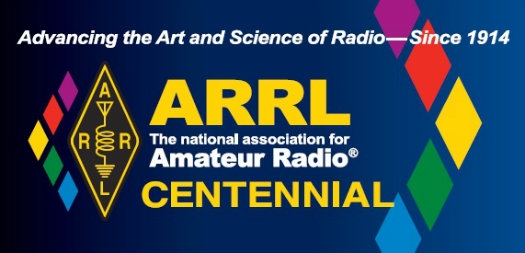The Comm Log
The Blog for N7FAN's Communications Information Center.
Friday, February 21, 2014
A Merging of the Ways
Well, I've finally decided to merge the two, in the hopes that I can concentrate on putting out better content...or at least consistent content.
This blog will remain as it is, but all of the posts have been merged with my other blog, and all future posts will occur over yonder.
Check it out at
Monday, February 10, 2014
Grammatically Correct Confusion
Lately, there have been conflicting lines of thought regarding grammar in Social Media posts.
The Advanced Public Information Officer training, at FEMA's Emergency Management Institute, stresses "Flawless Grammar" in Social Media releases.
However, Cheryl Bledsoe (@CherylBle), at the SM4EM Blog responds with,
"...The Twitter community will ask you to provide timely, relevant and interesting information. Accuracy is good, too, although in dynamic situations may be a little tricky. I've heard it said that you can be timely or accurate, but rarely both at the same time. Your community will forgive you for inaccuracies as long as you quickly correct misinformation and communicate regularly."Ok, this makes sense.
Over at the IACP Center For Social Media's blog, Billy Grogan (@ChiefGrogan), in a piece titled "The Grammar Police," writes"
"...Although some shorthand is used on certain social media sites like Twitter, because of the character limitation, that should not be the norm. It is important that the massage the department is trying to convey is clearly and accurately represented so the department’s social media followers will get it. Some posts may offer critical information that could place the public in danger if misunderstood."
His blog post is riddled with subtle spelling errors, in an effort to draw attention to his words, and the impact that poor grammar can have to the overall message.
After reading these two blog posts, which seem to contain contradictory suggestions, I have come to the conclusion that sometimes the importance of the message outweighs the need for 100% flawless grammar...depending on the Social Media platform.
Posts on Facebook, or blog posts with critical information? Absolutely, you had better run your prose past a proof reader first.
On Twitter, with it's 140 character limit, you might need to exercise the editorial pen quite a bit. However, keep in mind that your customer (general public, residents, etc) need to be able to understand what you post, as well as understand the importance of it.
Not sure what to abbreviate, or how? Check out Webopedia's Twitter Dictionary.
Thursday, January 30, 2014
How can we do it better?
There are groups for crime prevention, crime rumor proliferation, and there are probably a few secret ones for crime planning, as well.
All of this data to sift through, and that's only one Social Media platform. The PD has one person dedicated as the Public Information Officer. It is physically impossible for him to do his PIO job, as well as keep an eye on what's happened digitally in town.
The Block Watch coordinator is trying to get a handle on some of the rumors, but it's too much for her, too.
I think it's time to go to the Chief with a proposal for the VIP volunteers. Maybe some of us could help the PIO with the "connecting with the people" details online.
Something has to be done, and failure is not an option. We cannot afford to not engage our customer in their desired mode.
The answer to, "Is that the best you can do..." ...is always no.We have the technology, the volunteers and the desire to get it right. We just need to take the next step.
A better question is, "what resource would enable you to do even better?"
(Hat tip to Seth Godin's blog. Also, group count might be slightly exaggerated for dramatic effect.)
Friday, January 24, 2014
100 Years of ARRL
They're celebrating all year long. Here is a PDF document with information.
What will the next 100 years bring us? Even smaller radios? More options in the palm of your hand?
Maybe now is the time for you to get your License, if you're not already a ham. If you are a Ham, are you active? Need a new radio?
HamUniverse.com wrote a neat little article about purchasing your first radio. Here it is.
Tips for Choosing your First Radio for Your Ham Station and getting on the AIR! By N4UJW
Maybe join a ARRL Affiliated Club in your area, too. Become active in your community.
Become Radio Active in 2014!
73, de n7fan
Friday, December 27, 2013
Auxiliary Communications Field Operations Guide
Have you seen this? The Auxiliary Communications Field Operations Guide?
"The Auxiliary Communications Field Operations Guide (AUXFOG) is a reference for auxiliary communicators who directly support backup emergency communications for State/local public safety entities or for an amateur radio organization supporting public safety.
"This reference guide contains information about AuxComm best practices, frequently used radio frequencies, Mutual Aid channels as well as tips and suggestions about auxiliary emergency communicators integrating into a NIMS ICS environment to support communications for planned events or incidents. It can serve as a reference both for auxiliary emergency communicators and public safety communications professionals."
Auxiliary Communications Field Operations Guide
Friday, December 20, 2013
ARES and CERT
One of the groups I belong to on LinkedIn.com has just finished up a long discussion on Community Emergency Response Teams and Amateur Radio Emergency Service.
I’m not sure if any agreement was reached, but the pontificating was fierce on both sides of the discussion.
And now, to toss some fuel onto the embers of the fire, the ARRL released their weekly newsletter, and advocated for ARES members to get involved in CERT!
Sunday, November 10, 2013
Training Standards
As to standards of training, I know of none. Each agency creates (or fails to create) their own. Since every government does everything different, there are very few “basics” when it comes to communication training, except for these:
- The proper radio calling procedure.
- Use plain English; no codes, no ham codes, no 10-codes, etc.
- Maximize tactical calls, minimize ham radio calls.
The standards of deportment, appearance, behavior, performance, minimum required training, etc. are generally policies estab- lished by the local government. If not, they should be; and if it’s worth doing right it’s worth writing it down.
There are, however, related standards to learn, such as:
- The unwritten protocol and nuances of an agency. Since these are unwritten these are part of what the unit officers learn by working IN the agency in some on-going capacity.
- Applicable local or state laws, such as in California where the Standardized Emergency Management System takes effect 12/1/96. This involves five basics: ICS, Mutual Aid, MACS, OA and OASIS. See RACES Bulletin 418 dated 2/19/96.
- Thorough working understanding of the Incident Command System (ICS) and how it is used by your government. See RACES Bulletin 416 issued 2/5/96. Also see also EMCOM Bulletins 001-020.
- How the communications Mutual Aid system works in your area. Who is authorized to activate or call out the unit and under what circumstances. See RACES bulletin 414 dated 1/22/96.
- The mission statement of the local communications unit.
- California jurisdictions see RACES Bulletin 413 on the Operational Area (OA), issued 1/15/96 and 417 on OASIS, issued 2/12/96.



